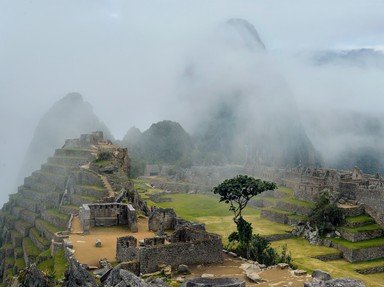Quiz Answer Key and Fun Facts
1. The family-based community unit at the heart of the empire
2. The language of the Incas
3. The title or word used to refer to a member of the royal family
4. The official wife of the emperor who was also his sister
5. The common citizen in the Inca empire
6. Capital city of the Inca empire
7. Professional runner or messenger who ran along the road system
8. The system of knots used for record keeping
9. A philosopher or teacher who taught the noble children
10. Inca citadel most likely used as a royal estate
Source: Author
tiffanyram
This quiz was reviewed by FunTrivia editor
bloomsby before going online.
Any errors found in FunTrivia content are routinely corrected through our feedback system.

